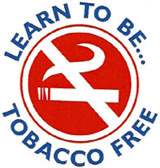
 October 15, 2009 - Chileans are still the heaviest smokers despite a strict anti-tobacco law. When a strict anti-tobacco law came into effect three years ago (Monday, August 14, 2006), Maria Eugenia Avila scoffed. She had no intention of quitting the two packs a day she was delightfully smoking. She just stopped going to malls. “I flee from places where I can’t smoke and I cover the horrible warnings on the packs. I love smoking and I suffer with this law and all its prohibitions. But no law is going to make me quit,” the 47-year-old kindergarten teacher said, while puffing away on a habit that costs her nearly $150 a month.
October 15, 2009 - Chileans are still the heaviest smokers despite a strict anti-tobacco law. When a strict anti-tobacco law came into effect three years ago (Monday, August 14, 2006), Maria Eugenia Avila scoffed. She had no intention of quitting the two packs a day she was delightfully smoking. She just stopped going to malls. “I flee from places where I can’t smoke and I cover the horrible warnings on the packs. I love smoking and I suffer with this law and all its prohibitions. But no law is going to make me quit,” the 47-year-old kindergarten teacher said, while puffing away on a habit that costs her nearly $150 a month.
Three years into the tobacco-control legislation, Chileans are far from kicking the habit. Smoking among Chileans has remained fairly stable, dropping slightly from 42.6 percent in 2006, to 41.2 percent in 2008, with a perilous upward trend among women (currently 37.4 percent) and teenagers (35.4 percent, particularly females), according to the latest government survey on tobacco consumption.
This makes Chileans the heaviest smokers in the region. Another “smoker” country is Argentina, but it lags behind with smokers making up 30 percent of its population, according to the World Health Organization. Slightly more than 16 percent of Brazilians and about 19 percent of Mexicans smoke, while in the United States, 23 percent of the overall population are smokers. Map South America - Chile...
After ratifying the Framework Convention for Tobacco Control, in August 2006, Chile enacted new legislation that set strict regulations on cigarette consumption, advertising and sales. Among other things, the new law banned tobacco advertising in the media, on .cl dominion websites and near schools. It also prohibited selling cigarettes to minors or within a 100-meter radius of schools. (Anti-smoking law takes effect in Chile, Xinhua News Agency, People.com.CN, 8/15/2009)
The legislation also established mandatory smoking and non-smoking areas in restaurants and bars and prohibited all smoking in transportation services, schools, gas stations, elevators, health clinics, airports, theaters, gyms, supermarkets, malls and government offices. And lastly, it mandated that all cigarette packs should carry warnings that take up half of both sides.
But the law had several fundamental flaws. It didn’t raise taxes on cigarette consumption, it did little in terms of prevention other than put warnings on cigarette packs, it failed to impose 100 percent smoke-free policies on all closed precincts and lacked treatment programs for quitters, said Maria Teresa Valenzuela, a tobacco expert at the University of Chile’s School of Medicine.
Maria Teresa Valenzuela: “The law didn’t include these things because of the enormous pressure from the tobacco industry, which was tremendously aggressive during the discussion of the bill. Its strategy was without a doubt to block any measures that could hinder tobacco consumption, especially raising taxes.”
Chiletabacos, owned by British American Tobacco (BAT), virtually monopolizes the industry, controlling 96 percent of the market. It pays $600 million in tax revenues every year and several former cabinet ministers sit on its board of directors. Philip Morris, which represents 4 percent of the Chilean tobacco market, brought a suit against BAT on July 14, 2009 for practicing unfair market strategies, allowing the company to have a large monopoly of Chile’s tobacco sales. Philip Morris markets locally the tobacco blends Marlboro and L&M, competing with Belmont and Derby, Chiletobaco’s top selling brands.
Treating patients with tobacco-related illnesses costs $1.1 billion, according to the Health Ministry, which says that every year there are more than 16,000 tobacco-related deaths in Chile. This is more than 18 percent of total deaths in the country.
Although Chile’s law complies with the Framework Convention, it falls short of WHO recommendations. First and foremost, it did not raise taxes on cigarette sales, now at 60.4 percent. This is one of the highest in the region, along with Argentina, Mexico and Uruguay. However, more could be done, say tobacco control advocates.
A Pan American Health Organization study has found that increasing taxes by 10 percent could reduce cigarette consumption by 2.2 percent in the short-run and 4.5 percent in the long-run.
Fines aren’t terribly high, either. For tobacco companies, infringing on the law carries a fine ranging from $6,800 to $67,000. Places that don’t comply with the law pay fines between $67 to $1,600, while smoking in a non-authorized area carries a fine of $100.
Currently, the frequently underfunded and understaffed regional sanitation authorities are in charge of enforcing the law, but they can only report non-compliance, not take legal action against infringers. The sanitation officials report infractions to the courts, who then levy a fine. But with other urgent matters to deal with, having the sanitation officials supervise whether someone is smoking in a non-smoking area is clearly not a priority.
Prevention is also weak. Some education programs geared at students have been put in place, but they are not extensive, nor are there public information campaigns. Most prevention is through the warnings on cigarette packs, which don’t seem to be having much impact in spite of the very explicit messages that smoking kills and causes heart failure and other damage, and even bad breath.
For the Health Ministry, it is too early to measure any long-term effects of the law. But what it has done, said Marisol Acuna, responsible for tobacco issues at the ministry’s public policy division, is jump start a cultural and social trend that should gradually lower smoking rates in the future.
“People are now capable of demanding that others not smoke in non-authorized places. And smokers have also changed their behavior: they now ask others for permission to smoke or go outside to smoke, and in general, respect non-smoking areas. That is a good sign, but if we want to reach out to the group that has the highest smoking rate (19 to 34 years old), raising taxes is a strategy that must be considered,” she said.
The Health Ministry is aiming to reduce smoking by next year to 30 percent of the general population and to 20 percent of teenagers, but this goal seems practically impossible unless major changes are made to the law.
“The current law was a good start but it needs to be perfected,” said Lezak Shallat, a tobacco control advocate, “especially eliminating the loopholes that keep many people, especially workers, involuntarily under clouds of secondhand smoke.”
Tobacco in Chile..
Reference: No smoking in Chile? No way. Chileans are still the heaviest smokers in the region despite a strict anti-tobacco law. by Pascale Bonnefoy, GlobalPost, 10/13/2009.
Click on images to enlarge, 1st image the Coat-of-Arms for Chile..
Bringing the World of Tobacco Control closer together..
Chile's anti-tobacco law ineffective..
Subscribe to:
Post Comments (Atom)


To Provide Public Awareness
Purpose
About Us
Contact Us
2008 HIGHLIGHTS
TOPIX PAPERS - 2008 & 2009..
Archive
-
▼
2009 (1446)
-
▼
10/11 - 10/18 (31)
- United Kingdom - Packaging people - tobacco displa...
- San Francisco - Philip Morris has dropped its law...
- In Process: UK - Plain tobacco packaging still on...
- UK - Retailer tells small shops to ignore tobacco ...
- UK - Association of Convenience Stores (ACS) unhap...
- New York City bans the sale of flavored tobacco pr...
- FDA ban of flavored cigarette rolling papers..
- U.S. IOM - like former Surgeon General Carmona sta...
- Chile's anti-tobacco law ineffective..
- Canada Ontario/Quebec - make it illegal for minors...
- American Nonsmokers' Rights Foundation - smokefre...
- Internet, Flavors everywhere - snuff being market...
- Can the Tobacco Industry be trusted - it's our chi...
- Wisconsin - almost last state to require fire-saf...
- Indonesia - section on tobacco in health bill di...
- Lorillard to Release Third Quarter 2009 Results on...
- Namibia - Tobacco Products Control Bill passes Nat...
- Nunavut Territory - highest rate of smoking in Ca...
- CA Governor Schwarzeneggar vetoes E cigarette ban ...
- United Kingdom - House of Commons - ban cigarette ...
- Syria - tobacco control measures to be implemented..
- Ireland - people responding well to the ban on cig...
- JTI attacks UK government for plan to ban tobacco ...
- Member states of WHO's Western Pacific region agr...
- Bulgaria - chair of the economic committee in parl...
- PMI - launches website - opinion on total ban on t...
- Syria - bans smoking in public places..
- United Kingdom - 3rd reading of Public Health Bi...
- U.S. - Canadian law enforcement seize smuggled ci...
- U.S. - flavored cigarettes illegal - now how abou...
- Guam - medical professionals send strong meassage ...
-
▼
10/11 - 10/18 (31)
© Copyright Notice: The content of this website is for information education purposes only and any newsbrief may be used only as "fair use" for information/education purposes with permission of the authors and providing that original references and associated reference links are included in HTML format.
0 comments:
Post a Comment